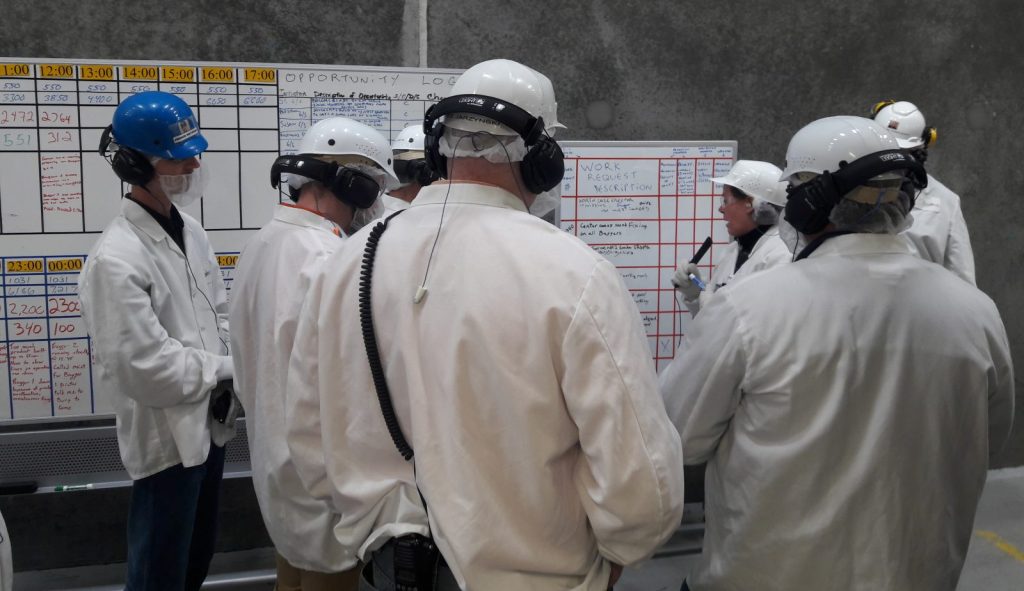
The Anatomy of the Kaizen Method and How to Apply It in Your Workplace
In Spanish, it’s “mejora.” In Polish, it’s “melhoria.” In Norwegian, it’s “forbedring.” No matter how you say it, they all mean the same thing: “improvement,” or as it’s said in Japanese: “Kaizen.” It’s this latter use of the term that has gained notoriety in manufacturing circles as a workplace philosophy that has worked wonders for organizations in their ability to achieve more favorable outcomes on an ongoing basis. As has been noted in this space previously, Toyota Motor Company might be the most well-known company in its successful adoption of Kaizen — which literally translates as change for the better — to drive process improvements. The specifics of what makes the Kaizen method so effective are catalogued in the book “Kaizen: The Key to Japan’s Competitive Success,” which was written by the automaker’s former chairman back in the mid-1980s.
“Businesses use Kaizen to ward off the tendency to “coast” when organizations find their stride.”
The Kaizen philosophy isn’t the sole province of the manufacturing sector; businesses in many different industries have used Kaizen to ward off the tendency to “coast” when organizations find their stride. But to make the Kaizen method truly transformative and to advance the improvement needle, it’s important to be familiar with its composition, or “anatomy.” As detailed by the Association for Supply Chain Management, the following represents the bones of the Kaizen event, which when implemented and adopted, can lead to meaty results.
1. Preparation
As it’s so often said, a failure to plan is a plan to fail. It’s why manufacturers, builders, and contractors spend so much time on the foundational elements to the projects they create. If everything isn’t aligned properly at the outset, it can lead to a chain reaction that goes off course quickly. Preparing is perhaps the most indispensable component of any Kaizen event. As such, it’s important to ask a few key questions that can help you map out your course of action. What is the basic problem that your company is facing? What is it that your business is seeking to correct? In other words, what is the desired outcome? How you answer these questions can help you determine which employees — and how many — should be assigned to the task.
2. Defining the problem
This component of the Kaizen method is similar to what’s involved when making goals: they need to be very specific and clearly delineated. They include asking several of the “W” questions — what, where, who, and when, according to ASCM.
Take automation as an example. To improve work processes and better respond to consumer demand, many manufacturers have installed AI to increase efficiency and decrease the costs associated with production. In fact, as Oxford Economics noted in a recent report, robotics has multiplied considerably over the past 20 years, topping 2.2 million. The AI stockpile could reach 20 million by 2030.
This has allowed them to more effectively distribute employees to better manage the supply chain. But AI adoption hasn’t come easily for everyone. If that’s the case for your company, ask yourself what is or is not occurring? Where in the production chain is X, Y or Z not taking place? Who is this issue affecting? When is the problem evidencing itself? Your ability to diagnose the root of the problem can lead to a successful solution.
3. Defining the goal
As previously referenced, goal-setting — whether in the Kaizen context or in general — should be very specific, hitting on all the elements of “S.M.A.R.T.” – “Specific,” “Measurable,” “Achievable,” “Relevant” and “Timely.” Included in this definition is demarcating when or how the goal will be achieved. In other words, there should be some element to the goal that clarifies when it will be reached and need go no further. ASCM offers the following as a potential goal statement where you can fill in the blanks accordingly:
“The scope of this project will be the (X process) and will start (date/time) to (date/time). The scope will not include (define).”
4. Training
As with many other industries, manufacturing is experiencing a bit of a skills gap, as the amount of work currently exceeds those with the proper qualifications to address what’s needed. Sans, the industry could see a deficit of 2.4 million manufacturing jobs that go unfilled within 10 years, according to the National Association of Manufacturers.
Training is a core component of Kaizen so team members — veteran and newly installed — can gain the skills they need to not only perform their jobs efficiently but achieve lasting results that reverberate throughout the supply chain.
5. Implementation
Now that you’ve laid the groundwork, the second-to-last step is the actual implementation. As noted by ASCM, how these plans are put into motion may be informed through gap analysis, where you identify the most glaring holes and how the plan can fill the void. Gap analysis can help you recognize waste, bottlenecks and redundancies so that these can be swapped out for the framework you’ve built through the Kaizen method. Once you’ve identified the holes, you should have a system in place that allows you to track or quantify whether the replacement process is paying dividends. For instance, if the initial problem was safety related, have there been fewer injury reports as a result of the new protocol? If the issue was production related, has output risen from a standpoint of deliverables? Whatever the answer, judge it in consultation with your goal’s timeline.
6. Follow-up
If you don’t follow-up, even the best laid plans can fall through. Whether through storyboarding, summary readouts, key performance indicators, one-on-one meetings with team members, it’s critical to review the end results so you can make the appropriate adjustments on a real-time basis. Improvements processes is a work in progress and following up can help you identify what isn’t working and what is.
Much like happiness, achieving Kaizen is more about the journey than the destination. Whether your industry is manufacturing, transportation and logistics, mining and metals or chemical processing — among many others — USC Consulting Group can help you achieve better results by evaluating your work processes and improving them. Please contact us to learn more and take your business to the next level.







